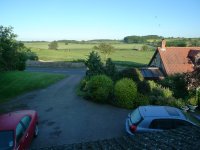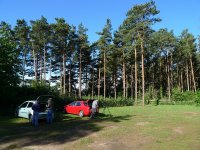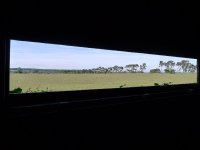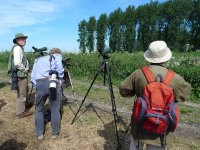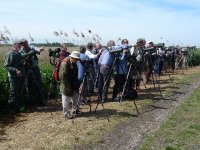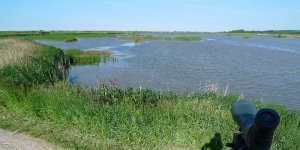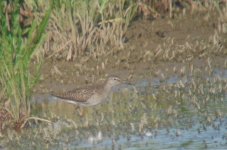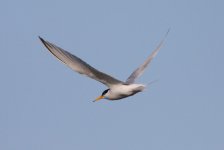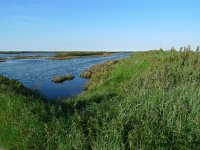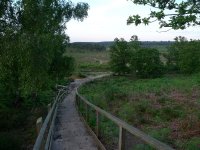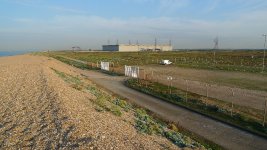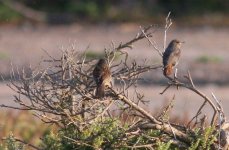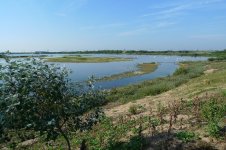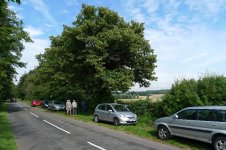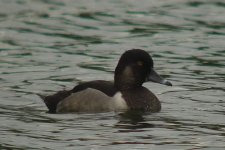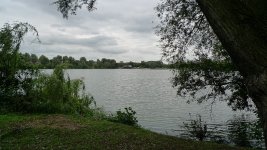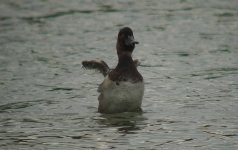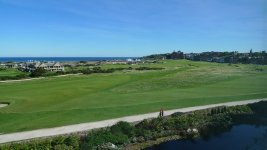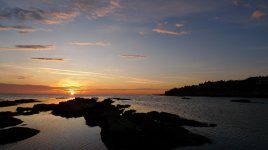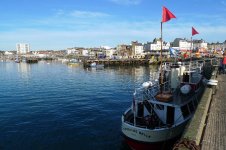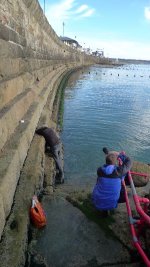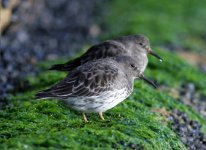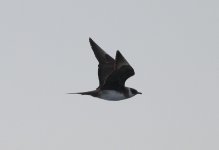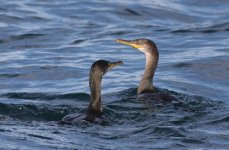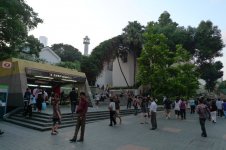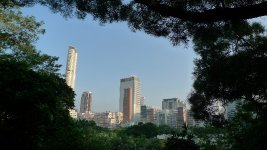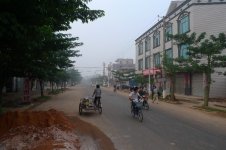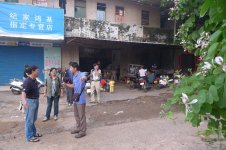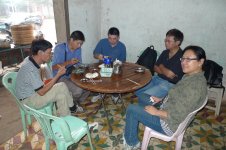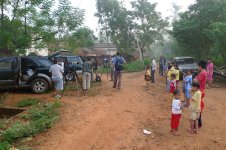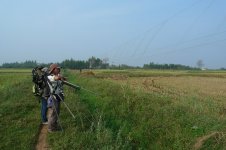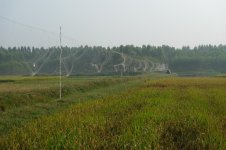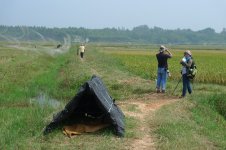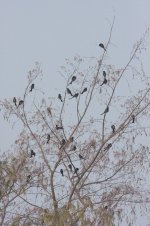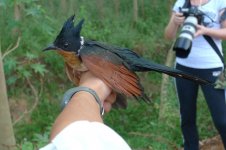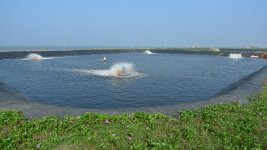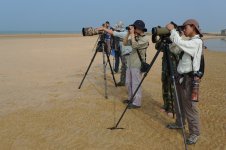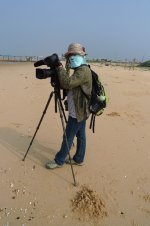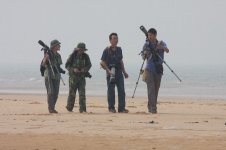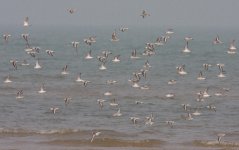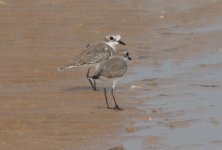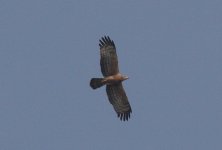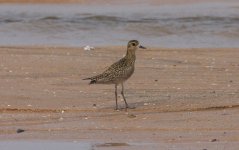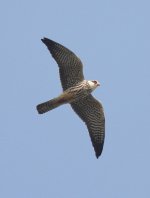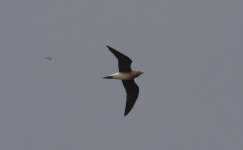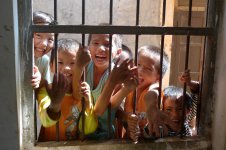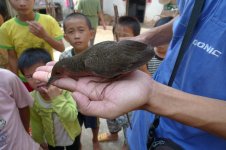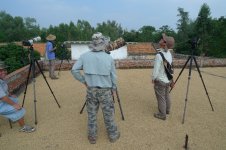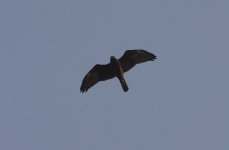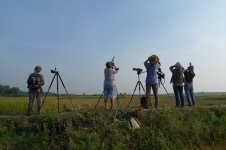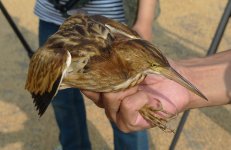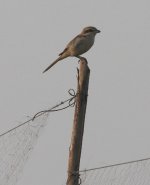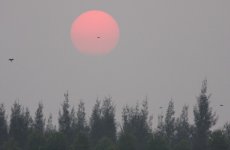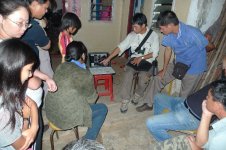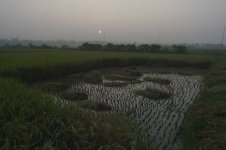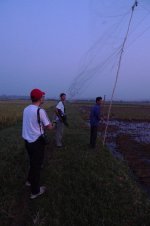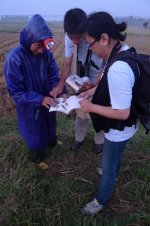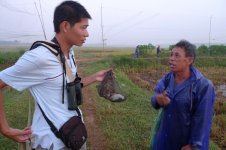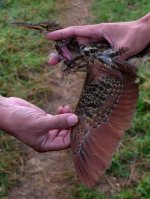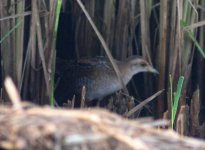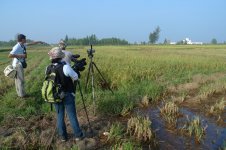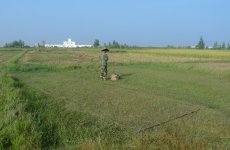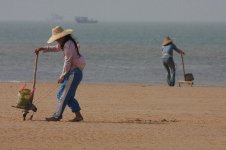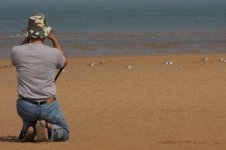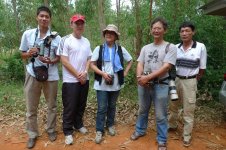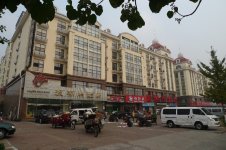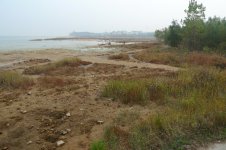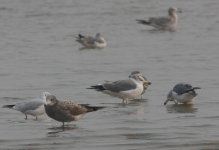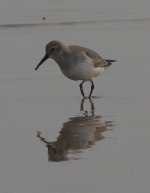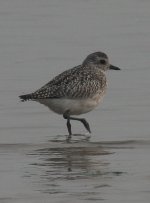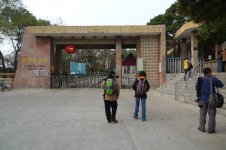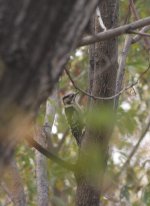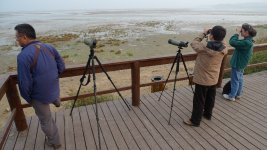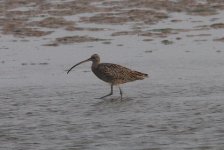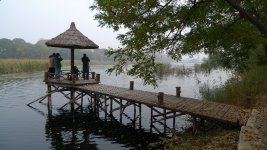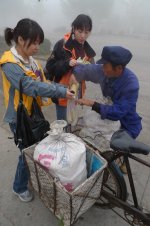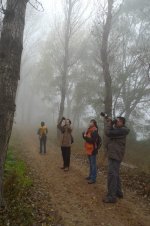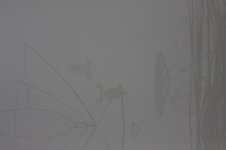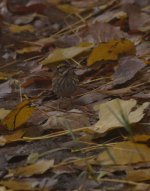ChinaBirds
Nick Sismey
12 June 09
At 0530 (Photo1) dawn had already well and duly broken in Manthorpe, Lincolnshire but it was 0630 before Steve and I set off for Weeting Heath (Photo 2) in Norfolk for our second attempt at Stone Curlew. We were in the right hand hide (Photo 3) by 8am after some birders said they had seen a couple of Stone Curlew by the far right hand fence.
Steve soon claimed to have spotted one, but couldn’t get on it with his telescope, so I proceeded to explain to him the tell tail differences between a Stone Curlew and a rabbit (which were not in short supply!). Some time later Steve spotted both birds near the fence as previously reported, and was adamant they were what he had seen earlier! I was on stony ground (pun intended) by now so just relished in his keen spotting ability! The birds were far too far away, even with digi-scoping, to get anything apart from a hazy blurred photo, so they were all soon deleted!
313.Stone Curlew-----------------Weeting Heath------------------England
Next it was across the border to Suffolk and Lakenheath to again try and pick up on a bird we had dipped on back in May.
It was a long walk to the far end of the reserve (Photo 4) to where there was a female Golden Oriole sitting on a nest. She was joined on a number of occasions by a splendid male that had the whole crowd (Photo 5) that had built up after we had arrived, spell bound. Steve was the perfect host in this situation guiding new birders to the nest, most were appreciative but for some reason, no matter what directions we gave, one lady always knew best, not sure if she ever saw the bird, oh well!
314.Golden Oriole------------------Lakenheath--------------------England
More to follow……….
At 0530 (Photo1) dawn had already well and duly broken in Manthorpe, Lincolnshire but it was 0630 before Steve and I set off for Weeting Heath (Photo 2) in Norfolk for our second attempt at Stone Curlew. We were in the right hand hide (Photo 3) by 8am after some birders said they had seen a couple of Stone Curlew by the far right hand fence.
Steve soon claimed to have spotted one, but couldn’t get on it with his telescope, so I proceeded to explain to him the tell tail differences between a Stone Curlew and a rabbit (which were not in short supply!). Some time later Steve spotted both birds near the fence as previously reported, and was adamant they were what he had seen earlier! I was on stony ground (pun intended) by now so just relished in his keen spotting ability! The birds were far too far away, even with digi-scoping, to get anything apart from a hazy blurred photo, so they were all soon deleted!
313.Stone Curlew-----------------Weeting Heath------------------England
Next it was across the border to Suffolk and Lakenheath to again try and pick up on a bird we had dipped on back in May.
It was a long walk to the far end of the reserve (Photo 4) to where there was a female Golden Oriole sitting on a nest. She was joined on a number of occasions by a splendid male that had the whole crowd (Photo 5) that had built up after we had arrived, spell bound. Steve was the perfect host in this situation guiding new birders to the nest, most were appreciative but for some reason, no matter what directions we gave, one lady always knew best, not sure if she ever saw the bird, oh well!
314.Golden Oriole------------------Lakenheath--------------------England
More to follow……….




